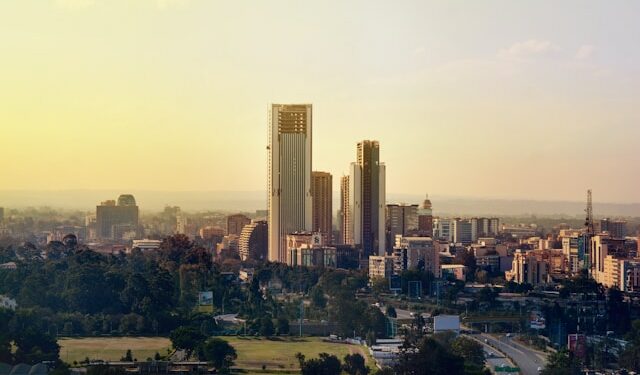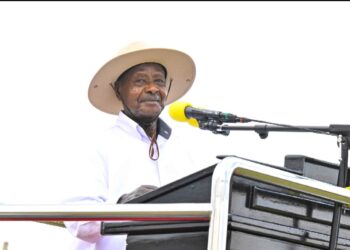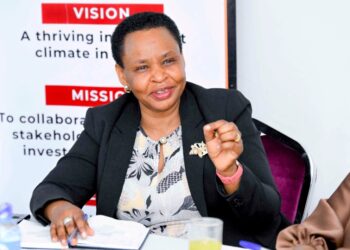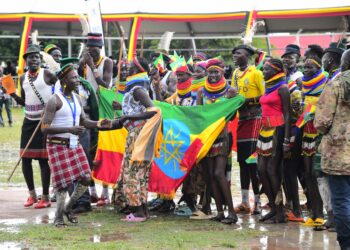Four East African Community (EAC) member states have agreed to join forces with Uganda and Kenya to develop a modern standard gauge railway (SGR).
Earlier this month, Rwanda, Burundi, the Democratic Republic of Congo (DRC), and South Sudan officially became part of the SGR Cluster Joint Ministerial Committee. They committed to engage development partners in securing funding for the ambitious infrastructure project that would help enhance regional integration, speed up the movement of goods, and bolster economic ties in the EAC.
Boosting bargaining power through expanded partnerships
The decision, announced during a ministerial meeting in Mombasa, aims to address the longstanding funding challenges that have plagued the joint SGR project, which has been in limbo for over five years.
The initial 472.3km Mombasa-Nairobi phase was opened in 2013 after years of delays, with a further extension to the Central Rift Valley’s town of Naivasha completed in 2019. Unfortunately, the Naivasha-Kisumu-Kampala leg of the SGR has not been expanded even an inch.
The ministers acknowledged the difficulties faced in attracting financiers to the project despite its potential to shake up regional trade and transportation.
“It was a challenge to undertake the project piecemeal,” said Fred Byamukama, Uganda’s Minister of Works and Transport. “We cannot have an SGR from Malaba to Kampala if the Naivasha-Malaba section is not complete. That is why we are seeking funds to ensure the sections are constructed simultaneously.”
Initially conceived nearly a decade ago, the SGR project aims to establish a high-speed rail network connecting the coastal city of Mombasa in Kenya to the inland regions of Uganda, Rwanda, South Sudan, and, ultimately, DRC. By facilitating the efficient movement of goods and people across borders, the SGR is expected to significantly boost intra-regional trade and unlock new economic opportunities for the participating nations.
However, the project has faced numerous setbacks, primarily due to the daunting task of securing adequate financing. In 2019, former Kenyan President Uhuru Kenyatta’s efforts to secure $3.68 billion from China to fund the third phase of the SGR, extending to Kisumu and subsequently to Malaba, were unsuccessful. Instead, Kenya secured a modest $400 million to upgrade its century-old meter-gauge railway to the Ugandan border, according to Monitor.
The decision to involve additional EAC partners in the SGR Cluster Joint Ministerial Committee is seen as a strategic move to increase the region’s bargaining power among potential donors and investors. Kipchumba Murkomen, Kenya’s Cabinet Secretary for Roads and Transport, expressed optimism that the expanded partnership will enhance the project’s viability and attract much-needed funding.
“The other countries joining the cluster will increase Kampala and Nairobi’s bargaining power among donors, who have been evaluating the viability of the project for many years,” Murkomen stated.
As the planning and implementation phases of the joint SGR project continue, stakeholders remain optimistic about its potential to transform the region’s transportation landscape and foster closer integration among the East African nations. However, addressing the challenges of funding, environmental concerns, and community engagement will be critical to the project’s success.
Overcoming financing hurdles
One of the key challenges facing the project is securing the requisite financing. While various options, including loans and public-private partnerships, are being explored, the ministers acknowledged the need for innovative approaches to entice potential lenders.
To secure the necessary financing, the EAC partners might employ various incentives to entice lenders to the negotiation table. Similar to how banks, wealth managers, and providers of gaming services offer no deposit bonuses to attract customers, these countries may leverage concessional deals, construction contracts, and other enticements to encourage Chinese and offshore financiers to fund the SGR project.
Kenya has estimated the cost of constructing the line from Naivasha to Malaba, the border town with Uganda, at $5.3 billion. Meanwhile, Uganda is in the final stages of negotiations with a proposed contractor, with the expectation of signing a contract for the Malaba to Kampala phase this month.
Paving the way for regional connectivity
To ensure seamless connectivity between Mombasa and the DRC’s capital, Kinshasa, the ministers committed to ratifying the existing SGR Protocol and the SGR Tripartite Agreement with the DRC. On top of that, the five partner states agreed to establish a framework that facilitates cross-border maintenance of the SGR assets and facilities.
“Kenya and Uganda have completed harmonization of the technical specifications and standards,” Murkomen said. “Rwanda hopes to join the framework between Uganda and Yapi Merkezi, a Turkish firm, to update the feasibility study of the Mirama Hills-Kigali section, which will make the project more viable.”
Addressing environmental and community concerns
While the economic benefits of the joint SGR project are undeniable, concerns have been raised regarding its potential environmental impact and the displacement of communities along the proposed route. Civil society organizations and environmental groups have called for comprehensive environmental impact assessments and stakeholder consultations to mitigate any adverse effects.
“It is crucial that the SGR project strikes a balance between economic development and environmental sustainability,” said Jane Nalunga, Executive Director of the East African Environmental Watch. “We urge the governments to prioritize transparency and ensure that affected communities are adequately compensated and relocated.”
Reviving a stalled initiative
The decision to involve additional EAC partners in the SGR Cluster Joint Ministerial Committee is seen as a strategic move to revive the stalled project and increase the region’s bargaining power among potential donors and investors. In 2019, former Kenyan President Uhuru Kenyatta’s efforts to secure $3.68 billion from China to fund the third phase of the SGR, extending to Kisumu and subsequently to Malaba, were unsuccessful. Instead, Kenya secured a modest $400 million to upgrade its century-old meter-gauge railway to the Ugandan border.
The ministers expressed confidence that the joint effort and resource mobilization as a unified bloc would increase the project’s viability and attract the necessary funding.
Do you have a story in your community or an opinion to share with us: Email us at editorial@watchdoguganda.com












